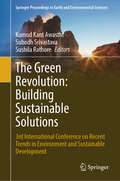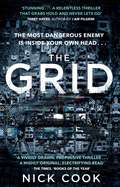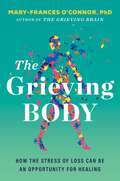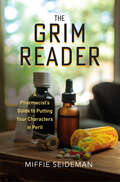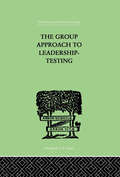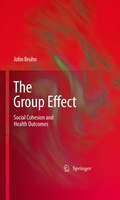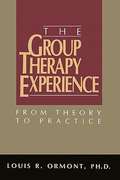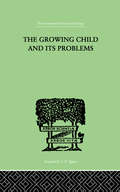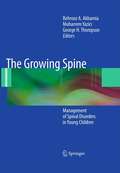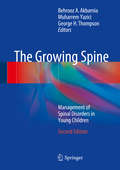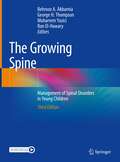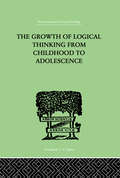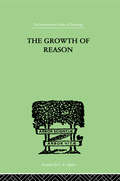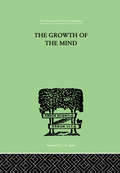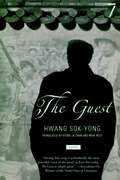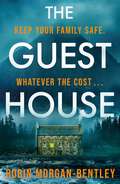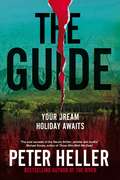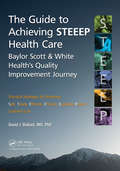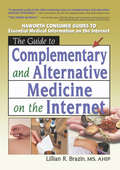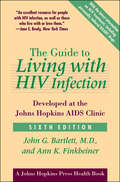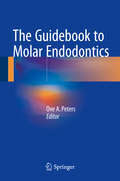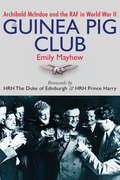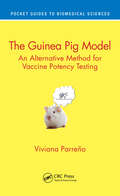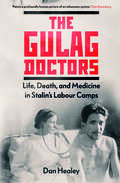- Table View
- List View
The Green Revolution: 3rd International Conference on Recent Trends in Environment and Sustainable Development (Springer Proceedings in Earth and Environmental Sciences)
by Kumud Kant Awasthi Subodh Srivastava Sushila RathoreThis book showcases some of the research that was presented at the RTESD 2023, the 3rd international conference on recent trends in environment and sustainable development, with topics that explore important global issues. This book covers cutting-edge research and creative solutions in four key areas: nanomaterials in biological applications, renewable energy, agrifood, and sustainability. Discussions about environment protection cover a wide range of topics, including how to manage environment resources sustainably, how to improve governance, and the effects of climate change. Chapters on energy production, urban and industrial systems, governance issues, and the crucial shift towards circular economies are all included in the section on energy. The Agrifood domain looks into innovative food processing techniques, the impact of climate change on food production, and sustainable agricultural practises. As a final note, the Sustainability segment covers a wide range of subjects, including the sustainability of the bioeconomy, cyber-physical systems, the effects of climate change, and resource efficiency, supporting the urgent need for a comprehensive strategy for achieving global sustainability.
The Grid: 'A stunning thriller’ Terry Hayes, author of I AM PILGRIM
by Nick Cook'A highly original, electrifying read' The Times'A stylish, riveting thriller' Daily Mail'An assured page-turner ... it combines action and foreign locations with big ideas a la Dan Brown' Sunday TimesThe US President Thompson has been dreaming of his own death. A repeating nightmare that hounds him night after night that he can't ignore: something tells him it's not just a dream, it feels too real.Thompson's doctor, military psychiatrist Josh Cain, is summoned to a church tower near the White House. He thinks he is there to talk down another suicidal ex-Marine. But the man he finds tells him of a plot to kill Thompson, revealing secrets he can't possibly have known - just seconds before a sniper's bullet takes him out . . .Battles have been fought man to man, then machine to machine, and even in cyberspace. But now there is a different battlefield emerging: human consciousness and the fight for our minds.What readers are saying:'A classy, intelligent and reflective investigative thriller.''A layered plot, engaging characters and a spine chilling ring of truth to the plot, which lured me in and kept me trapped until the final page.''A real page turner with plenty of surprises and twists. Great read.''THE BEST BOOK THAT I'VE READ ALL YEAR!'
The Grieving Body: How the Stress of Loss Can Be an Opportunity for Healing
by Mary-Frances O'ConnorThe follow-up to celebrated grief expert, neuroscientist, and psychologist Dr. Mary-Frances O’Connor’s The Grieving Brain focuses on the impact of grief—and life’s other major stressors—on the human body. Coping with death and grief is one of the most painful human experiences. While we can speak to the psychological and emotional ramifications of loss and sorrow, we often overlook its impact on our physical bodies. Dr. Mary-Frances O’Connor specializes in the study of grief, and in The Grieving Body she shares vital scientific research, revealing imperative new insights on its profound physiological impact. As she did in The Grieving Brain, O’Connor combines illuminating studies and personal stories to explore the toll loss takes on our cardiovascular, endocrine, and immune systems and the larger implications for our long-term well-being.The Grieving Body addresses questions about how bereavement affects us, such as:Can we die of a broken heart?What happens in our bodies when we’re grieving?How do our coping behaviors affect our physical health?What is the cognitive impact of grief?Why are we more prone to illness during times of enormous stress?and moreResearch-backed, warm, and empathetic, The Grieving Body is an essential, hopeful read for those experiencing loss as well as their supportive friends and family.The Grieving Body is illustrated with black-and-white charts and graphs.
The Grim Reader: A Pharmacist's Guide to Putting Your Characters in Peril
by Miffie SeidemanMany authors draw from headlines or movies rather than personal experience to write drug-related scenes, and the result may be more fiction than fact. So, how can you craft a convincing scene involving accidental use of fentanyl-tainted pot or a murder attempt with grandma's pain pills?A much-needed resource, The Grim Reader details how to write medical scenarios that result in realistic page-turners. As drug inaccuracies multiply in screenplays, scripts, novels, and audio plays, Dr. Miffie Seideman, Pharm.D. provides writers (and editors) with the background and authenticity necessary to develop plausible plotlines, including: • Pertinent drug facts, tips, and symptoms • Symptom timelines • Tips for developing historically accurate scenes • Common street drug names and slang • Sample scenarios to demonstrate how to weave the information into a believable scene • Writing prompts to provide scene starters and offer practice Combining Seideman's pharmacology knowledge with her love for creative writing, The Grim Reader is the ultimate guide to help authors craft accurate drug scenes and avoid medical mistakes.
The Group Approach To Leadership-Testing
by Harris, HenryFirst Published in 1999. Routledge is an imprint of Taylor & Francis, an informa company.
The Group Effect
by John BruhnSociologists and anthropologists have had a long interest in studying the ways in which cultures shaped different patterns of health, disease, and mortality. Social scientists have documented low rates of chronic disease and disability in non-Western societies and have suggested that social stability, cultural homogeneity and social cohesion may play a part in explaining these low rates. On the other hand, in studies of Western societies, social scientists have found that disease and mortality assume different patterns among various ethnic, cultural and social-economic groups. The role of stress, social change and a low degree of cohesion have been suggested, along with other factors as contributing to the variable rates among different social groups. Social cohesion has been implicated in the cause and recovery from both physical and psychological illnesses. Although there has been a large amount of work established the beneficial effects of cohesion on health and well-being, relatively little work has focused on HOW increased social cohesion sustains or improves health. This work is based on the premise that there are risk factors, including social cohesion that regulate health and disease in groups. One of the challenges is how to measure social cohesion - it can be readily observed and experienced but difficult to quantify. A better understanding of how social cohesion works will be valuable to improving group-level interventions.
The Group Therapy Experience From Theory To Practice
by Louis OrmontIn this definitive work, internationally renowned group therapist Dr. Louis Ormont sets down the techniques and innovations that give the group experience its unique therapeutic power. From Theory to Practice, Dr. Ormont discusses techniques such as those of identifying people's problems, dealing with resistances, helping members confirm new identities, and termination itself.
The Growing Child And Its Problems (International Library Of Psychology Ser. #Vol. 79)
by Miller, EmanuelFirst Published in 1999. Routledge is an imprint of Taylor & Francis, an informa company.
The Growing Spine
by Muharrem Yazici George H. Thompson Behrooz A. AkbarniaSpinal disorders in very young children may be caused by a variety of conditions. The treatment of such conditions is often challenging due to the age of the patient and the progressive nature of the deformity. There also may be associated problems such as congenital anomalies, respiratory insufficiency, and neurological problems. Depending on the etiology of the deformity, these children are often cared for by multiple specialists including pediatricians, pediatric orthopaedists or orthopaedic spine surgeons, neurologists, pediatric surgeons, pediatric neurosurgeons, oncologists, and/or pulmonologists. Health professionals in all of the mentioned disciplines are involved in the management of these patients, which is why compiling a comprehensive textbook that is not limited to orthopedic specialists is essential. This textbook will effectively help to standardize the care of these patients. Furthermore, other professionals such as nurses, physical therapists and healthcare professionals in training are usually not familiar with these conditions and are in need of a reference book to consult when caring for children with spinal deformities.
The Growing Spine, 2nd Edition
by Muharrem Yazici George H. Thompson Behrooz A. AkbarniaThe second edition of The Growing Spine has been extensively revised to cover recent advances in knowledge and management. The book is intended as a comprehensive, one-stop reference for specialists and health professionals who care for young children with spinal deformities. In addition, it will effectively help to standardize the care of these patients. Depending on the etiology, children with spinal deformities are often cared for by multiple specialists, including pediatricians, pediatric orthopaedists or orthopaedic spine surgeons, neurologists, pediatric surgeons, pediatric neurosurgeons, oncologists, and pulmonologists. The multidisciplinary nature of care is reflected in The Growing Spine, which will be of value for all involved practitioners rather than just orthopaedic specialists. It will also be an ideal reference for nurses, physical therapists, and healthcare professionals in training, who are usually unfamiliar with spinal deformities in children.
The Growing Spine: Management of Spinal Disorders in Young Children
by Muharrem Yazici George H. Thompson Behrooz A. Akbarnia Ron El-HawaryThere has been significant progress in the field of spinal disorders in very young children over the past two decades. However, the treatment of such conditions remains challenging due to the age of the patient, different etiologies, associated morbidities and the progressive nature of the deformity. Depending on the etiology of the deformity, these children are often cared for by multiple specialists including pediatricians, pulmonologists, pediatric orthopedists or orthopedic spine surgeons, pediatric surgeons, pediatric neurosurgeons, neurologists and oncologists. Health professionals in all of the mentioned disciplines are involved in the management of these patients, which is why compiling a comprehensive text that is not limited to orthopedic specialists is essential. Since the second edition of this book was published, there has been a significant body of literature that has been published and advances made in the care of young children with spinal and thoracic deformities. This new edition will effectively help to standardize the care of these patients. Furthermore, other professionals, such as nurses, physical therapists and healthcare professionals in training, are usually not familiar with these conditions and are in need of a reference book to consult when caring for young children with spinal deformities. Sections are arranged thematically and comprise a comprehensive presentation of the current knowledge on disorders of the growing spine. After opening sections discussing general considerations and patient evaluation and diagnosis, subsequent sections describe the various categories of spinal deformity - idiopathic, congenital, neuromuscular, syndromic, and others - followed by surgical and non-surgical management strategies, both traditional and growth-friendly. Concluding sections address patient care and outcomes and outline future directions for research and practice.
The Growth Of Logical Thinking From Childhood To Adolescence: AN ESSAY ON THE CONSTRUCTION OF FORMAL OPERATIONAL STRUCTURES (International Library Of Psychology Ser.)
by Piaget, Jean & Inhelder, BrbelThis is Volume XXII of thirty-two on a series of Developmental Psychology. Originally published in 1958, this text offers a translation from French of an essay on the construction of formal operational structures to explain part of the growth of logic in a child's brain and development. It looks at propositional logic, the integration of formal thought and the operational schemata of formal logic.
The Growth Of Reason: A STUDY OF the Role of Verbal Activity in the Growth of the (International Library Of Psychology Ser.)
by Lorimer, FrankFirst Published in 1999. Routledge is an imprint of Taylor & Francis, an informa company.
The Growth of the Mind: An Introduction to Child-Psychology (International Library Of Psychology Ser.)
by K. KoffkaFirst Published in 1999. Routledge is an imprint of Taylor & Francis, an informa company.
The Guest
by Hwang Sok-YongBased on actual events, The Guest is a profound portrait of a divided people haunted by a painful past, and a generation's search for reconciliation. During the Korean War, Hwanghae Province in North Korea was the setting of a gruesome fifty-two day massacre. In an act of collective amnesia the atrocities were attributed to American military, but in truth they resulted from malicious battling between Christian and Communist Koreans. Forty years later, Ryu Yosop, a minister living in America returns to his home village, where his older brother once played a notorious role in the bloodshed. Besieged by vivid memories and visited by the troubled spirits of the deceased, Yosop must face the survivors of the tragedy and lay his brother's soul to rest. Faulkner-like in its intense interweaving narratives, The Guest is a daring and ambitious novel from a major figure in world literature.
The Guest House
by Robin Morgan-BentleyKEEP YOUR FAMILY SAFE.WHATEVER THE COST...Jamie and Victoria are expecting their first baby.With a few weeks to go, they head off for a final weekend break in a remote part of the North Pennines. The small and peaceful guesthouse is the ideal location to unwind together before becoming parents. Upon arrival, they are greeted by Barry and Fiona, the older couple who run the guesthouse. They cook them dinner and show them to their room before retreating to bed themselves.The next morning, Jamie and Victoria wake to find the house deserted. Barry and Fiona are nowhere to be seen. All the doors are locked. Both their mobile phones and car keys have disappeared. Even though it's a few weeks early, Victoria knows the contractions are starting.The baby is coming, and there's no way out.
The Guest House: ‘A tense spin on the locked-room mystery’ Observer
by Robin Morgan-Bentley'Atmospheric, original and tension-filled, THE GUEST HOUSE will keep you on the edge of your seat.' T.M. Logan, author of THE CURFEWKEEP YOUR FAMILY SAFE.WHATEVER THE COST...Jamie and Victoria are expecting their first baby.With a few weeks to go, they head off for a final weekend break in a remote part of the North Pennines. The small and peaceful guesthouse is the ideal location to unwind together before becoming parents. Upon arrival, they are greeted by Barry and Fiona, the older couple who run the guesthouse. They cook them dinner and show them to their room before retreating to bed themselves.The next morning, Jamie and Victoria wake to find the house deserted. Barry and Fiona are nowhere to be seen. All the doors are locked. Both their mobile phones and car keys have disappeared. Even though it's a few weeks early, Victoria knows the contractions are starting.The baby is coming, and there's no way out.
The Guide
by Peter Heller'The poet laureate of the literary thriller: sinister and soulful'Michael Koryta, author of Those Who Wish Me DeadThe best-selling author of The River returns with a heart-racing thriller about a young man escaping his own grief and an elite fishing lodge in Colorado hiding a plot of shocking menace Kingfisher Lodge: a boutique resort surrounded by a mile and a half of the most pristine river water on the planet.Safe from viruses that have plagued America for years, Kingfisher offers a respite for wealthy clients - and a return to normality for fishing guide Jack, battling the demons of a recent, devastating loss. But when a human scream pierces the night, Jack soon realises that the idyllic retreat may be merely a cover for a far more sinister operation.Lucy Foley meets Liane Moriarty's Nine Perfect Strangers, with the lyrical writing of Robert Macfarlane and an eerily plausible twist... PRAISE FOR PETER HELLER AND THE RIVER'Glorious prose and razor-sharp tension' Observer Thrillers of the Year'Utter joy... A suspenseful tale told with glorious drama and lyrical flair'Denise Mina, New York Times'Urgent, visceral writing - I couldn't turn the pages fast enough'Clare Mackintosh 'Lyrical and action-packed by turns' Guardian 'A master of suspense... A thrilling read with a dramatic twist at the end: you will not be able to put it down' The Lady'A must read' Daily Express'Heller packs a ton of adventure and emotion in this short novel, and I dare you to put it down once you've picked it up' Criminal Element
The Guide to Achieving STEEEP™ Health Care: Baylor Scott & White Health's Quality Improvement Journey
by David J. Ballard MD PhD.Achieving health care that is safe, timely, effective, efficient, equitable, and patient-centered (STEEEP) is not an endpoint, but a journey. This journey requires a commitment to quality improvement (QI) from the highest levels of leadership combined with the interdependent development of several key components of health care delivery: administrat
The Guide to Complementary and Alternative Medicine on the Internet
by M Sandra Wood Lillian R BrazinLearn to identify Internet-based complementary/alternative medicine resources you can trust! This well-organized book takes a commonsense approach to getting the most out of the Internet when it comes to finding reliable information on complementary and alternative medicine. Author Lillian Brazin teaches classes on finding and evaluating health information on the Internet. In this book, she shares her years of experience in using and evaluating medical Internet sites to teach you to spot authoritative resources and avoid misinformation, sales pitches, and out-and-out quackery. In addition to showing you where to find the information you need, this book stresses the importance (the how and why) of working closely with your physician to get the best results from your complementary/alternative medical experience. More than 20 "screen shot" illustrations give you a preview of what to look for on various sites! The Guide to Complementary and Alternative Medicine on the Internet will show you how to separate the wheat from the chaff when confronted with hundreds of Web sites purporting to provide reliable information. This jargon-free book addresses vital questions, such as: How can I be certain that the information I find is correct? How can I locate a Web site that was recommended to me? How do I start out to research a particular health problem? What do Internet terms like .com, .edu, .gov, listservs, :), BTW, LOL, flames, "netiquette," etc. mean? This book will also help you understand controversial "hot topics" that include: the Pilates exercise method that Jacqueline Kennedy Onassis helped popularize in the 1960s is trendy again, with Pilates studios in most major cities supermarket supplements, such as St. John's wort, gingko biloba, and vitamins A-Z: how can I find out which, if any of them, are for me? the validity of celebrity endorsements for supplements and alternative therapies While providing you with the skills to find the information you seek, this book reflects the author&’s cautious perspective. The Internet can be frightening and overwhelming because there is so much information to sift through, digest, and evaluate. The Guide to Complementary and Alternative Medicine on the Internet (first in the new Internet Guides to Consumer Health Care series from The Haworth Information Press) will help you identify Internet resources for complementary and alternative medicine that you can trust.
The Guide to Living with HIV Infection: Developed at the Johns Hopkins AIDS Clinic (A Johns Hopkins Press Health Book)
by Ann K. Finkbeiner John G. BartlettThe Guide to Living with HIV Infection is the most complete source of medical, emotional, social, and practical advice available for those infected with HIV and their loved ones. Developed at the Johns Hopkins AIDS Clinic, the guide provides essential information for making decisions about treatment and testing in a world transformed by new research and pharmacotherapy.In this thoroughly updated sixth edition, Dr. John Bartlett and Ann K. Finkbeiner address the latest information about risks of transmission, viral mutations that confer drug resistance, and new, rapid, HIV testing. They offer guidelines for Highly Active Antiretroviral Therapy (HAART), a therapy protocol that has dramatically increased life expectancy for HIV-positive people. They describe how to follow HAART and when to change drug regimens, the symptoms of and treatments for HAART side effects, and the costs of and insurance coverage for HAART. They also outline the possibilities for a diagnosis of "no detectable virus."Accompanied by updated references and resources, the sixth edition of The Guide to Living with HIV Infection offers new hope for people living with a virus that once left no hope at all.
The Guidebook to Molar Endodontics
by Ove A. PetersThis volume offers readers a pragmatic approach to endodontic therapy for permanent molars, based on up-to-date evidence. All chapters were written by experts in the field, and focus on preparation for treatment, vital pulp therapy, access cavity preparation, root canal shaping, outcome assessment, retreatment, apical surgery, and specific aspects of restorations for root canal-treated molars. The role of micro-CT data in visualizing canal anatomy is compared to cone beam CT, and detailed information on current clinical tools, such as irrigation adjuncts and engine-driven preparation tools is provided. Important steps are illustrated in clinical photographs and radiographs, as well as by schematic diagrams. Tables and check boxes highlight key points for special attention, and clinical pitfalls. Guiding references are provided. Performing molar endodontics is often a daunting prospect, regardless of the practice setting. This is where "Molar Endodontics" is an ideal source of guidance for practitioners. Special devices and recent innovations in apex locators and nickel-titanium instruments have, however, made procedures significantly easier and more practical for non-specialists. This book will help conscientious clinicians to master molar endodontics with well-described and established clinical methods.
The Guinea Pig Club: Archibald McIndoe and the RAF in World War II
by Emily Mayhew HRH The Duke of Edinburgh HRH Prince Harry Duke of SussexA truly inspiring tale about the history of the Guinea Pig Club. <P><P> Plastic surgery was in its infancy before the Second World War — the most rudimentary techniques were known only to a few surgeons worldwide. The Allies were tremendously fortunate in having the maverick surgeon Archibald McIndoe operating at a small hospital in East Grinstead in the south of England. <P><P>After arguing with his superiors, McIndoe set up a revolutionary new treatment regime and rightly secured his group of patients, dubbed the Guinea Pig Club, and honoured place in society. <P><P>Based on extensive research into official records and moving first-person recollections, this extraordinary book brings home the heroism and triumphs of this courageous band of men and contains updated material on how their example is inspiring today’s wounded veterans.
The Guinea Pig Model: An Alternative Method for Vaccine Potency Testing (Pocket Guides to Biomedical Sciences)
by Viviana ParreñoThis book summarizes the development and statistical validation of a guinea pig model as an alternative for potency testing of the viral antigens included in combined vaccines applied in cattle to control the respiratory, reproductive, and neonatal calf diarrhea syndromes. The model allows, in one serum sample, to test the vaccine quality for all the viral antigens included in aqueous as well as in oil-adjuvanted formulations of bovine vaccines. The methodology proposed for the control of bovine herpes virus, parainfluenza, and rotavirus were recommended by CAMEVET as guidelines for the 30 countries in the forum, including the US.Key Features Reviews combined vaccines used for cattle Summarizes animal models used for vaccine testing Focuses on bovine herpesviruses, rotaviruses, parainfluenza, and bovine viral diarrhea virus Provides guidance on the effectiveness of the Guinea Pig model for testing vaccine immunogenicity
The Gulag Doctors: Life, Death, and Medicine in Stalin's Labour Camps
by Dan HealeyA pioneering history of medical care in Stalin&’s Gulag—showing how doctors and nurses cared for inmates in appalling conditions A byword for injustice, suffering, and mass mortality, the Gulag exploited prisoners, compelling them to work harder for better rations in shocking conditions. From 1930 to 1953, eighteen million people passed through this penal-industrial empire. Many inmates, not reaching their quotas, succumbed to exhaustion, emaciation, and illness. It seems paradoxical that any medical care was available in the camps. But it was in fact ubiquitous. By 1939 the Gulag Sanitary Department employed 10,000 doctors, nurses and paramedics—about 40 percent of whom were prisoners. Dan Healey explores the lives of the medical staff who treated inmates in the Gulag. Doctors and nurses faced extremes of repression, supply shortages, and isolation. Yet they still created hospitals, re-fed prisoners, treated diseases, and &“saved&” a proportion of their patients. They taught apprentices and conducted research too. This groundbreaking account offers an unprecedented view of Stalin&’s forced-labour camps as experienced by its medical staff.
